Alleys of Moscow. Writers - to the poet
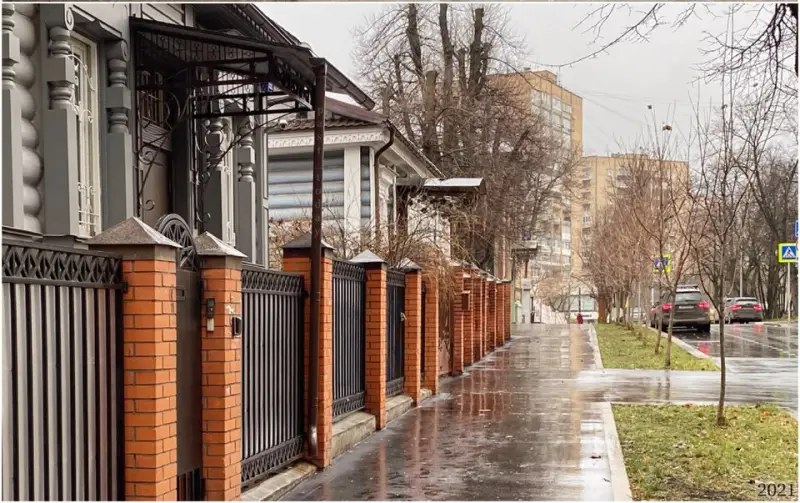
To begin with, I note that the name of the author of the first “What to do?” one of the most beautiful alleys in the capital was given back in 1922, but it was given in a strange way - it became Chernyshevsky. The lane was renamed not so long ago - in 1968, although in fact these places are almost completely unrelated to Chernyshevsky.
Another thing is Dostoevsky, who also got his lane five years after the revolution, and quite rightly so: after all, Bozhedomka and the surrounding area are, one might say, his Moscow literary patrimony.

Previously, these lanes were the 1st and 2nd Mariinsky streets for the hospital of the same name for the poor, built before the War of 1812 at the expense of the Guardian Council, reporting to Empress Maria Feodorovna. Not the mother of Nicholas II, but the widow of Paul I.
The crooked and rather long Chernyshevsky Lane meets Dostoevsky right at the hospital fence. Quite beautiful, but slowly aging, despite all the efforts of restorers busy renovating the museum and memorial sites of Fyodor Mikhailovich.

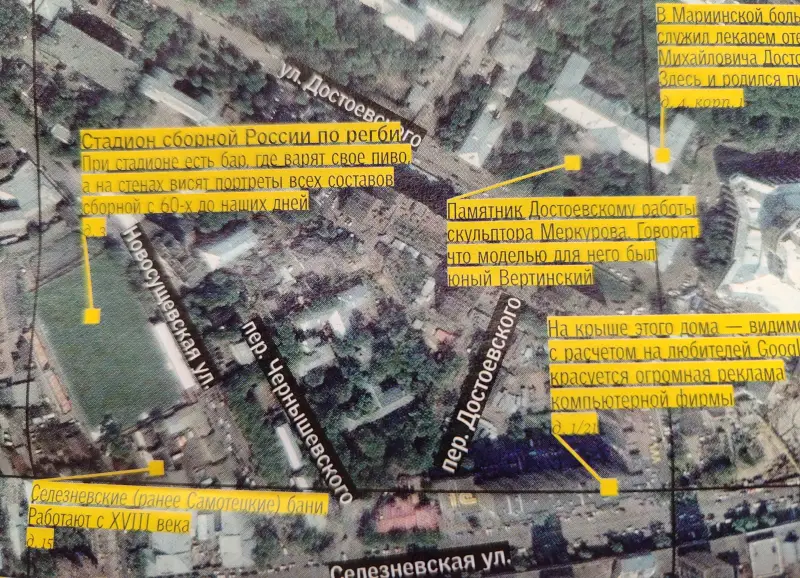
Hidden between two alleys is the Yesenin Center, a branch of the poet’s museum, which, due to indecently prolonged reconstruction, is in no way becoming the center of local cultural life. Interestingly, this separate mansion was converted by the architect M. K. Geppener from a former outbuilding on the territory of the estate of Konstantin Meyer.
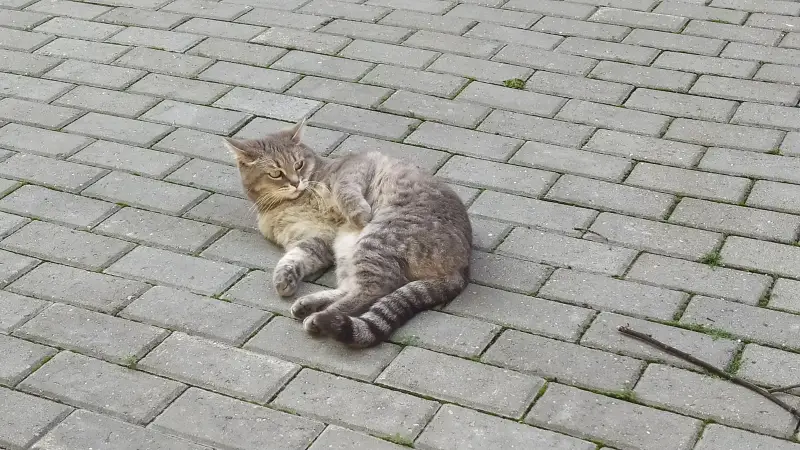
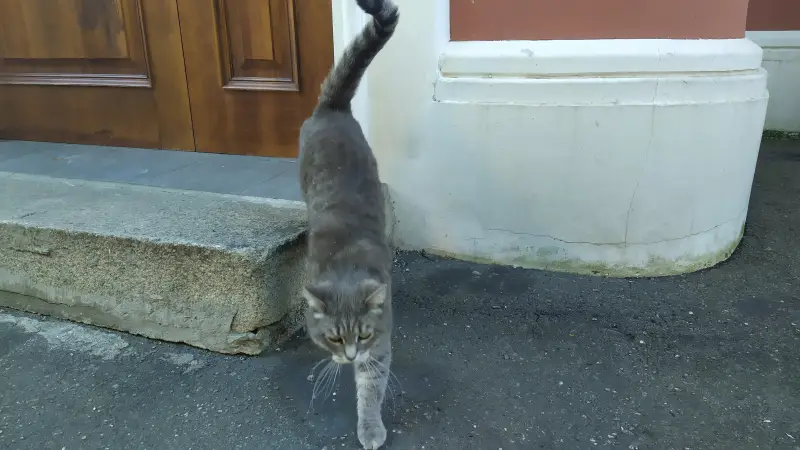
The estate overlooks the far part of Chernyshevsky Lane and today is pleasing to the eye, although it is closed to outsiders. Well, the real “hostess” of the Yesenin Center, familiar to all the locals, is the cat Katya, who, according to legend, descends from a kitten that the golden-haired Sergei Alexandrovich brought here to one of the parties, is clearly bored in the absence of a large number of visitors.
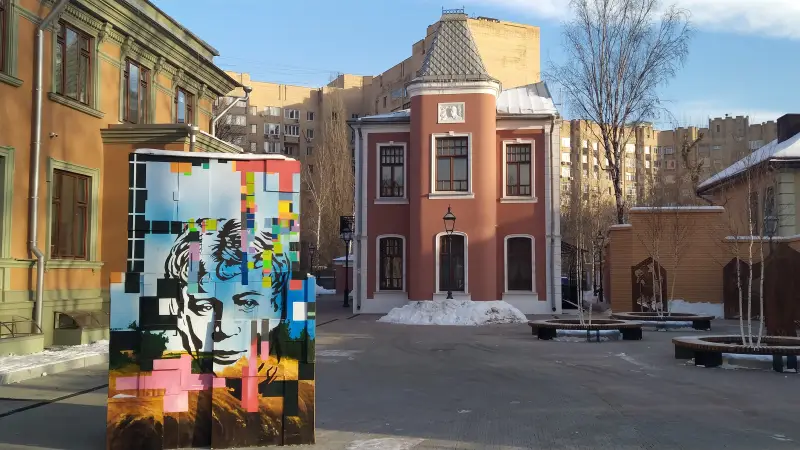
There is unconfirmed information circulating on the Internet that somewhere in these, then essentially dacha places, there was a literary cafe “At Adele’s”, which was actively visited by members of the Surikov literary and musical circle, including Sergei Yesenin.
And whether he read anything of his own here, even if not for the first time, who knows now. Today, few people know the cafe named after the poet in the courtyard of the Yesenin Center, although after its arrangement it looks pretty good in the current Moscow traditions. Rusty metal figures, more precisely, portraits of famous poets with excerpts from their best works, are still celebrated by a rare public.
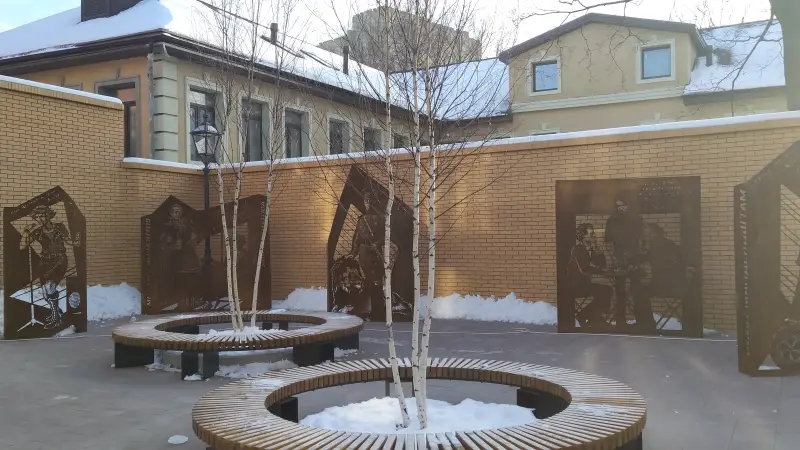

And, of course, he reads, as in the tiny square of the “Unknown Poet,” officially in the “Quarter of Poets.” Not so long ago, the public garden was replaced by an independent parking lot directly opposite the Anthropovaya Pit, where our lanes converge. About this small pond with the constant fires of fire during the season, I will only say that it bears the name of the first tenant and remains the last of the chain that used to go down to Neglinka, where Samotechnaya Street is now.
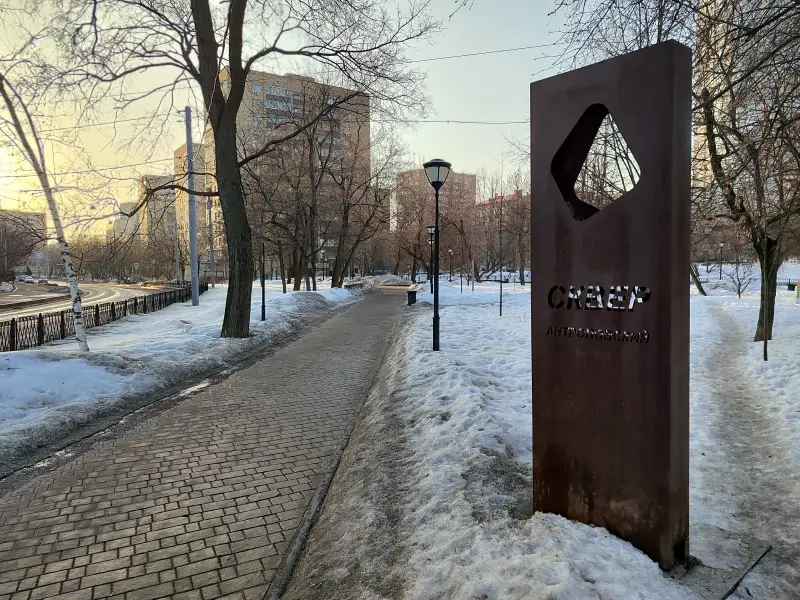
If Dostoevsky's main attraction is the tram, then on the sides of its neighbor you can see a lot of beautiful and interesting things. And you can walk along Chernyshevsky without risking inhaling exhaust fumes, hiding under the crowns of huge poplars in the heat.
About seven to ten years ago it was easy to find champignons here, although the next rework of the roadway seems to have finished them off. Chernyshevsky Lane could be glorified by Eldar Ryazanov, for whom in “Office Romance” Novoseltsev raises two boys in a slightly abandoned house, the front entrance of which is decorated with an openwork canopy.

The house burned down several years ago, but it was restored, even including a cartouche with the original monogram under one of the windows. The eldest of Novoseltsev’s sons went to school number 18 - “French”, which can be considered the norm for this area. Adjacent to the same Yesenin center is another school, this time in English, a kindergarten, or more precisely, preparatory linguistic classes and a club with a summer camp.
Some other educational institution, by all indications also a special one, or even an elite one, is currently being built right where the alleys merge into Seleznyovskaya Street. At the address lane. Dostoevsky, 2 used to be a kindergarten, to which the movie Novoseltsev took his youngest son. And the main facade of the Soviet high-rise building looks out onto Seleznyovka, in the other wing of which the Bogatyr store, known throughout Moscow, was once located.
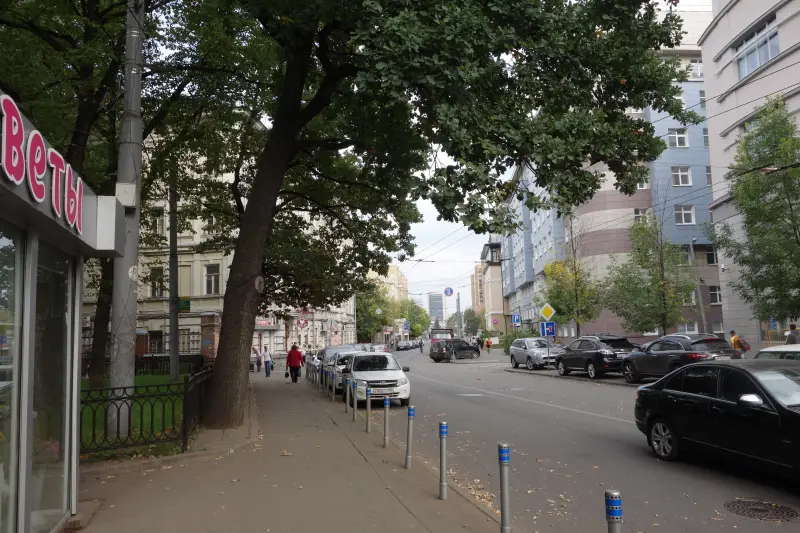
Now all the non-residential premises of this huge house, the courtyard of which occupied almost the entire right side of Dostoevsky Lane, have been taken over by the well-known company “1C”, and only the veterinary pharmacy and dentists from the FM clinic managed to join it.
The end facing Dostoevsky Lane is also a beautifully restored mansion, strongly reminiscent of a library, where the luxury real estate agency Time Property seems to operate.
However, local residents are convinced that this is where employees of the Anti-Corruption Foundation, which was headed by Navalny, worked for years. Judging by the quality of the restoration, one has more faith in real estate specialists, especially since before the revolution it was the house of the Sherupenkov merchants, which was actually considered a country house.
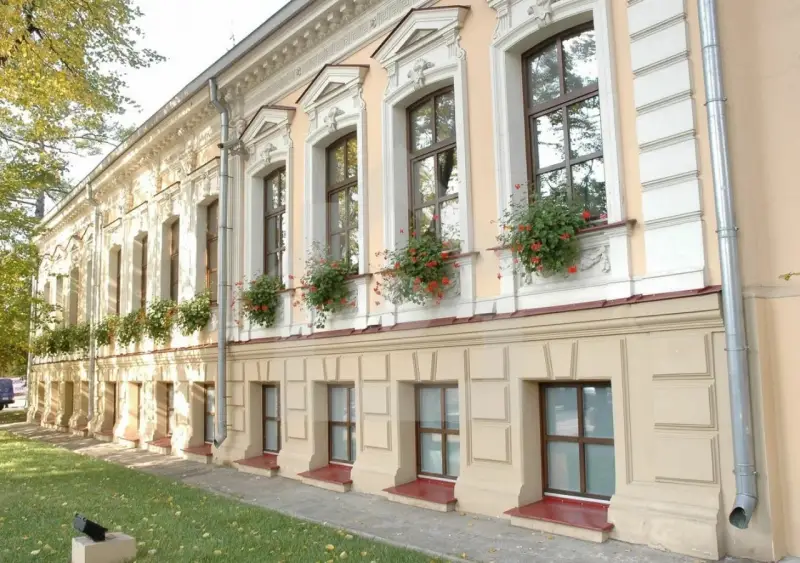
There is nothing else to note on Dostoevsky Lane, except that recently its sides, even with the huge courtyard of house 21 on Seleznevskaya Street, have been completely blocked off with barriers. Our native Moscow, even outside the Garden Ring, is losing the last islands where it was possible to park for free and quite freely. However, let’s return to another writer, albeit not so famous, but who also turned the heads of many.
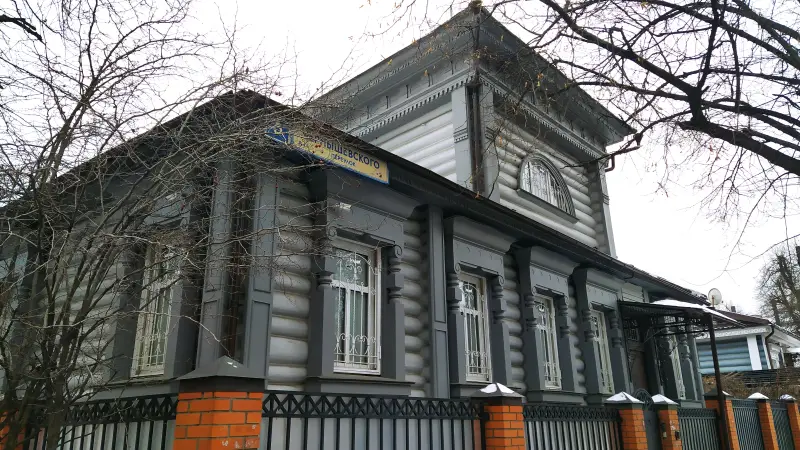
Before turning Chernyshevsky Lane to the right, towards Dostoevsky Street and the hospital with its museum, one cannot help but notice the wooden, but perfectly preserved by different owners, house of the collegiate adviser Yu. D. Moskatinyev, which was created by the architect N. D. Morozov at the end of the 19th century. Next is the main mansion in the estate of K. Meyer, the work of the already mentioned M. K. Geppener, as well as the house of the architect himself. Opposite is the Orthodox University with a worthy monument to John the Theologian.
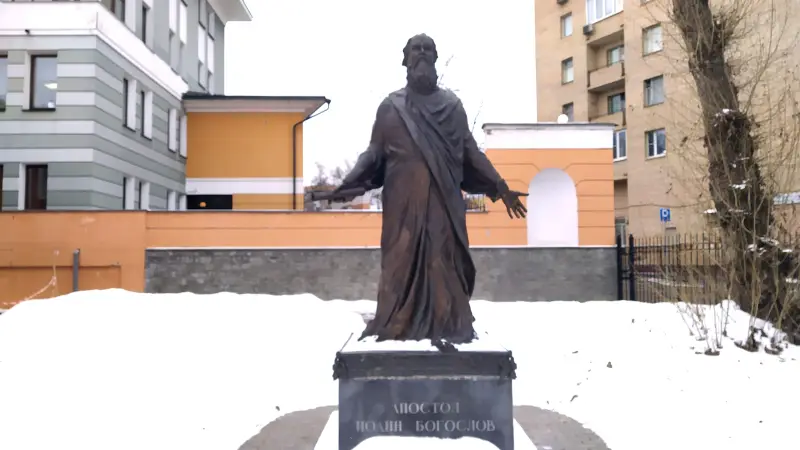
A lifetime would not be enough to tell a clear story about at least half of Moscow’s alleys, although quite a lot has been written and shown on TV about them. The selection of publications in Military Review may seem random, but this is not so - the author is well acquainted with each of the “selected”.
These were the Lavrskys and Volkonskys, but personally in this series of essays only Klimentovsky was named this way. Today the story was about those where I visit at least once a week, although this fact is very distantly related to the topic of our essays.
There are only a few left to introduce readers to, and additions to about fifty native and favorite lanes, if there are any, will be extremely rare as we make forays into the center of Moscow and work with sources. One’s own knowledge and memories are increasingly lacking.
Information